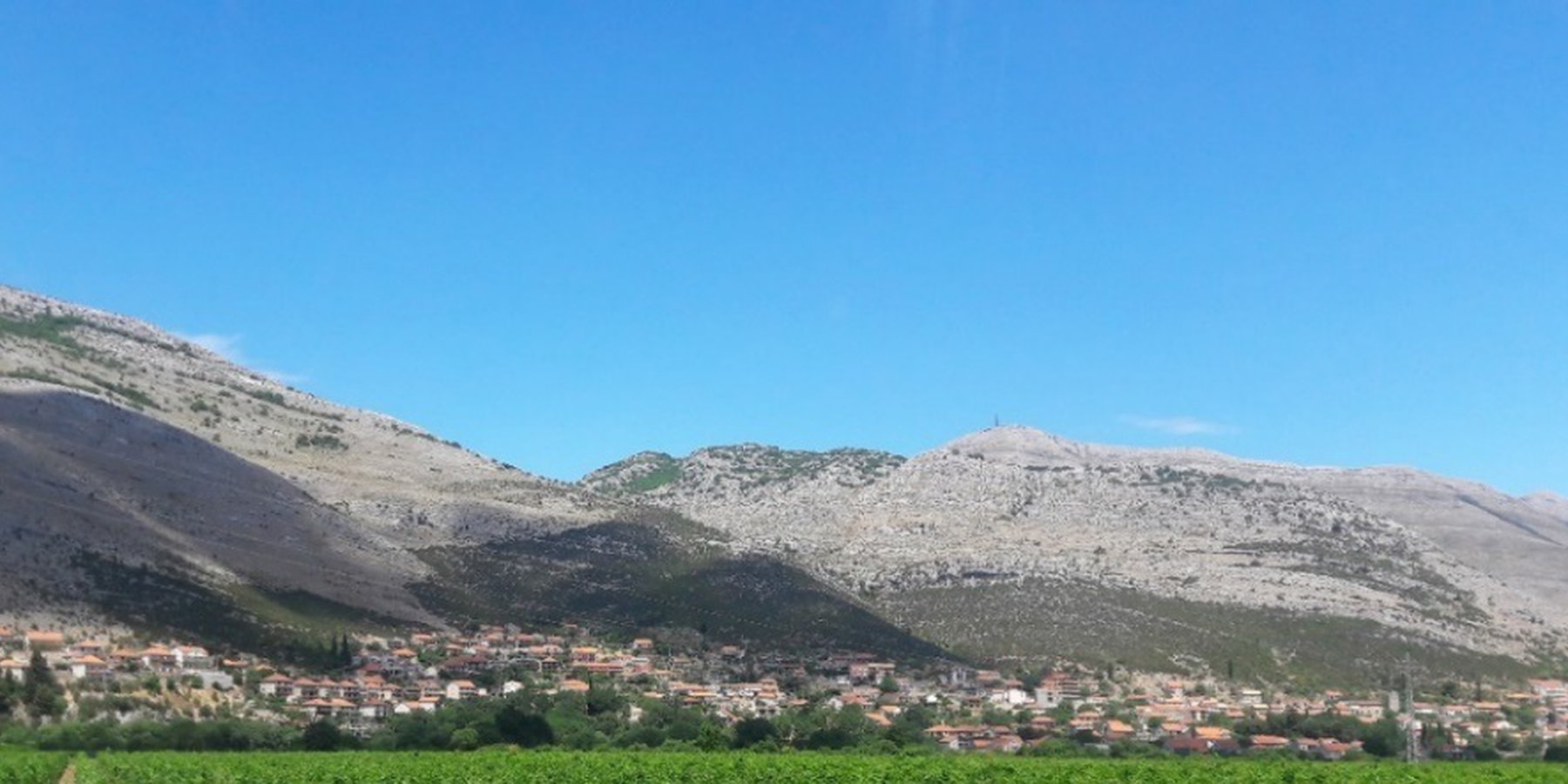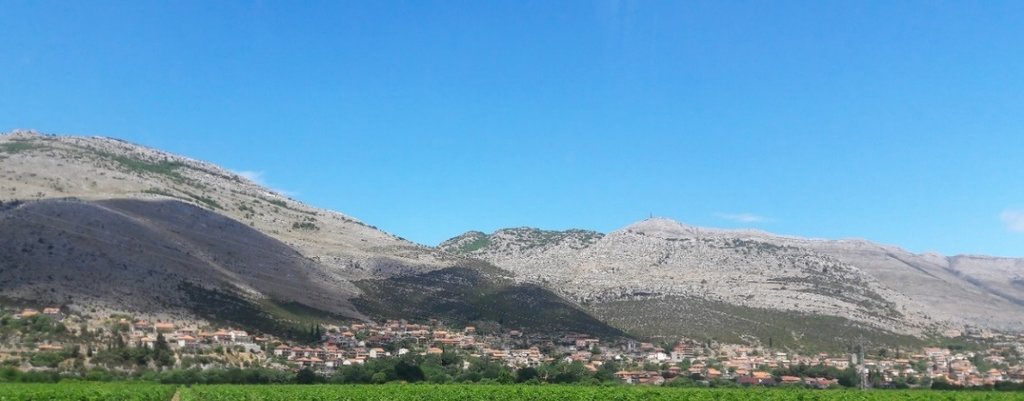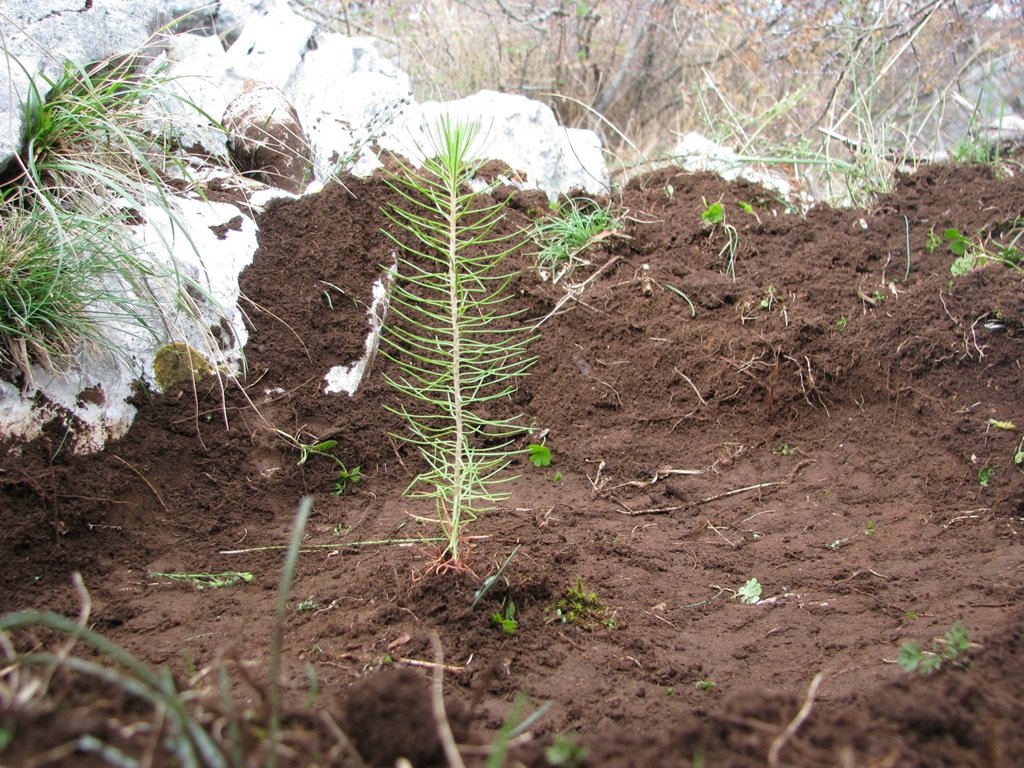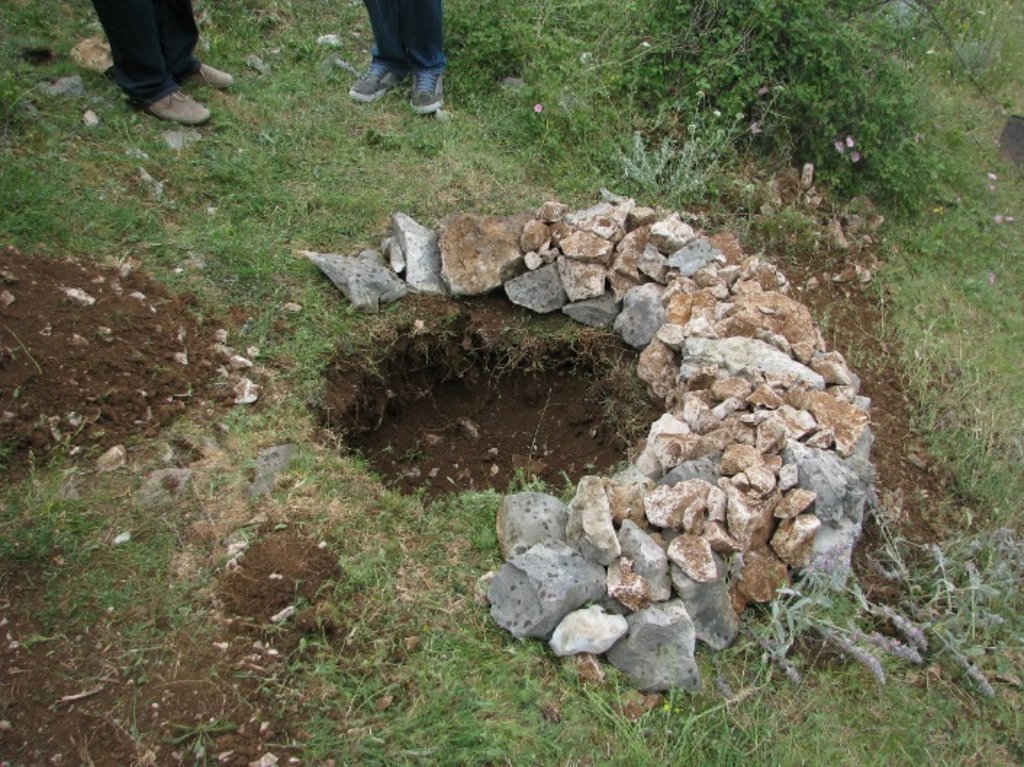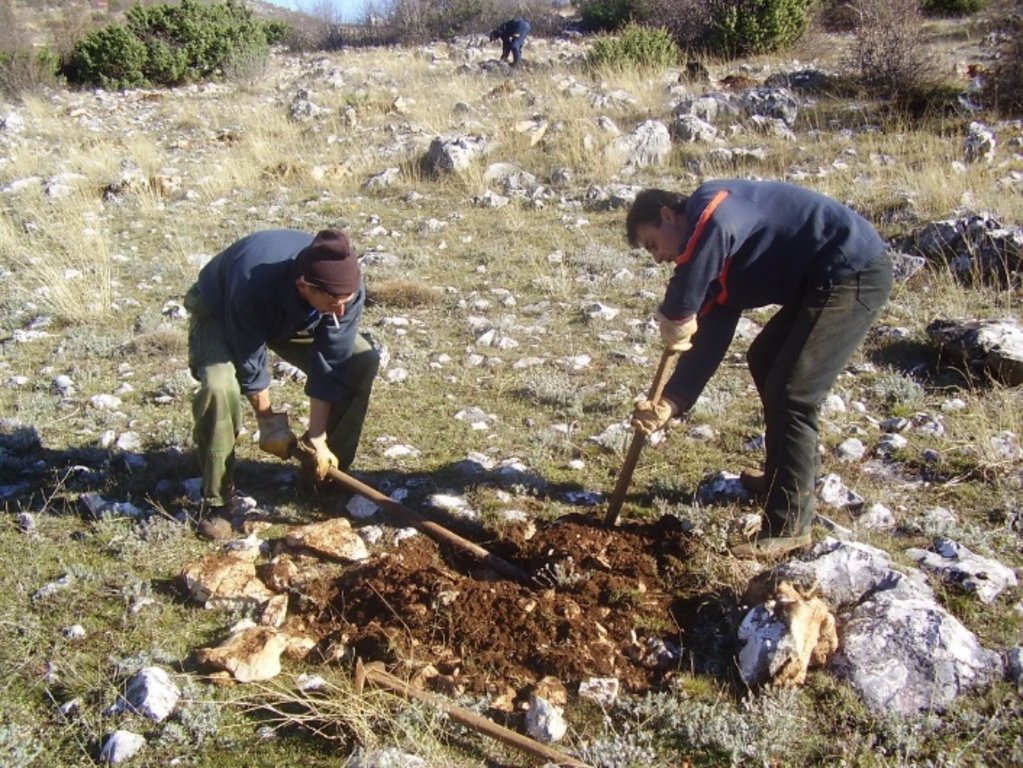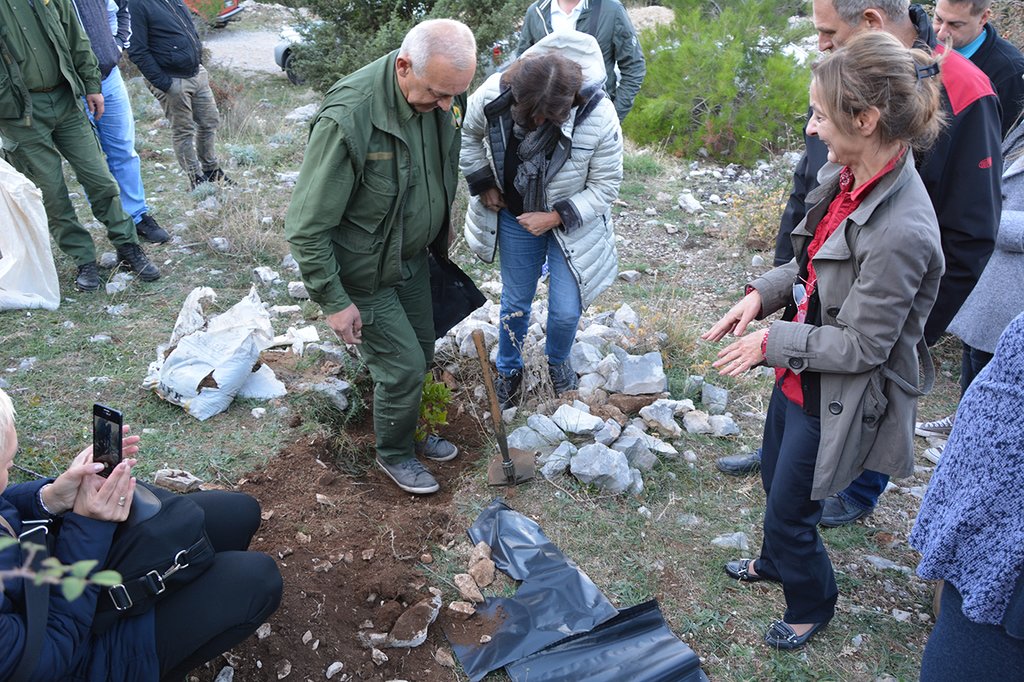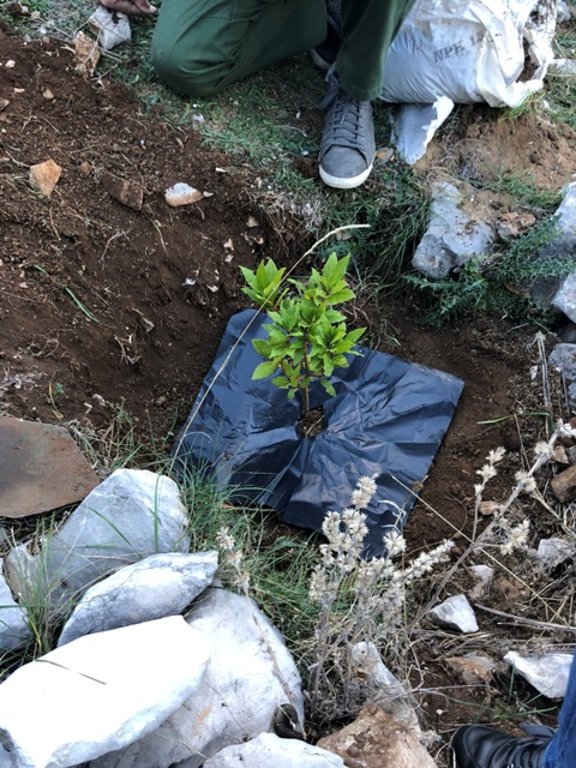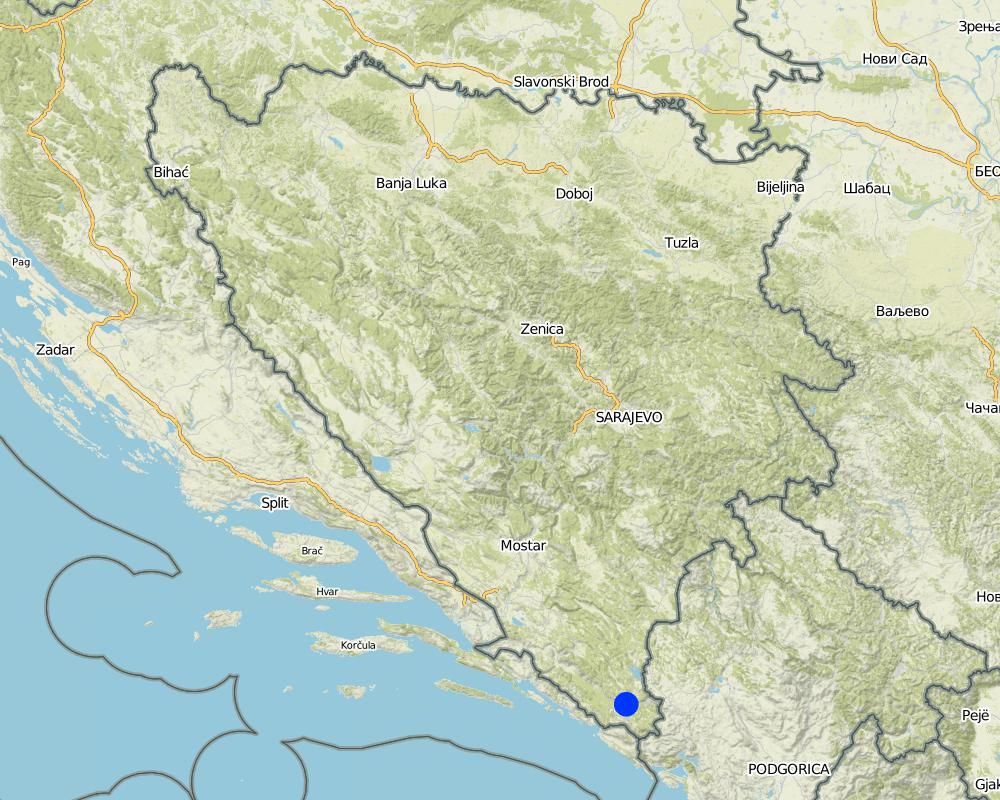Afforestation of bare land in karst areas [波斯尼亚和黑塞哥维那]
- 创建:
- 更新:
- 编制者: Marijana Kapović Solomun
- 编辑者: –
- 审查者: THEODORA FETSI, Donia Mühlematter
Pošumljavanje goleti
technologies_4367 - 波斯尼亚和黑塞哥维那
查看章节
全部展开 全部收起1. 一般信息
1.2 参与该技术评估和文件编制的资源人员和机构的联系方式
关键资源人
土地使用者:
Vasiljević Mirela
Center for Karst Management
波斯尼亚和黑塞哥维那
有助于对技术进行记录/评估的项目名称(如相关)
Decision Support for Mainstreaming and Scaling out Sustainable Land Management (GEF-FAO / DS-SLM)有助于对技术进行记录/评估的机构名称(如相关)
University of Banja Luka (UNIBL) - 波斯尼亚和黑塞哥维那1.3 关于使用通过WOCAT记录的数据的条件
编制者和关键资源人员接受有关使用通过WOCAT记录数据的条件。:
是
1.4 所述技术的可持续性声明
这里所描述的技术在土地退化方面是否存在问题,导致无法被认为是一种可持续的土地管理技术?:
否
1.5 参考关于SLM方法(使用WOCAT记录的SLM方法)的调查问卷
2. SLM技术的说明
2.1 技术简介
技术定义:
Afforestation of bare land in Herzegovina region, a vulnerable area characterized by Karst landscapes, is an SLM technique aimed to increase water-holding capacity and reduce land degradation
2.2 技术的详细说明
说明:
The afforestation of bare land is a very important SLM technique, which is mainly applied in the southern part of the Republika Srpska (Bosnia and Herzegovina), but also in other parts of the country where bare land is widespread. The southern part of the country,Herzegovina, is ecologically very vulnerable and characterized by the dominance of limestone-dolomite rocks, with shallow and poorly developed soils, water deficiency over vegetation period and poor water regime, which is an additional aggravating factor for successful afforestation. Under such conditions, afforestation is the most widely used SLM measure in the area, which is characterized by karst landscapes. Namely, since 1950, there was a combination of vegetation and technical measures that would increase the chances of success when reforesting Herzegovina's bare land.
Bare land is a result of the natural features of the given region, but very often is exacerbated by unsustainable forest management, and frequent fires that have an impact on vegetation cover. This creates preconditions for soil erosion and contamination of drinking water springs. Afforestation of bare land is applied throughout the territory of Herzegovina, but mainly on forestland and public owned areas. The specificity of the natural conditions of the Herzegovinian karst, greatly reduces the range of plant species that could be considered suitable for afforestation. Also, limestone-dolomite soils are usually shallow, dry and xero-termophilic and require irrigation to increase success. However, irrigation is still not being applied on forestland, therefore forest managers use other possible measures that could reduce the water deficit in the first years of plant life, including afforestation
The Karst Management Center (under the jurisdiction of the Public Forest Enterprize “Šume Republike Srpske” and Ministry of Agriculture, Forestry and Water Management), is located in Trebinje, and manages the forests and forest land of six municipalities in Herzegovina . Every year, as part of the regular forest/karst management measures, bare land is afforested, using plant species produced in forest nurseries of the Republika Srpska. The most used ones are Pinus nigra, Pinus halepensis and Cupressus sempervirens. The newly established forest nursery in Trebinje, is consisted of ecologically adapted species to Mediterranean conditions, which constitutes a step forward to increase success of afforestation. Plants are produced in containers whose root system is coated with high quality substrate and protected by plastic foil.
The basic characteristic of the SLM measure “afforestation on bare land” is the deeper holes that need to be dug in comparison to a “regular” afforestation. The dimensions of the holes are 50x50x50cm. Due to the unfavourable conditions (high level of rockiness, shallow soils, steep slopes, water deficit etc.), it is possible to plant maximum up to 1400 plants per hectare. A low-height stonewall is being built around the hole of the tree at the lower part of the mountain, so it can retain the water from the upper parts, reduce degradation and retain soil moisture.This is particularly important for steeper slopes where it is essential to conserve soil and water for improved growth of trees and other vegetation. After putting the seedlings into the holes, soil is being put around the root system, and polyvinyl foil is being placed in funnel form, to collect rainwater and create a compact compound of the substrate in the touching zone with the soil around the root.
The best period for afforestation in Herzegovina is October and November. The technology requires manual work due to level of rockiness and steep slopes, which does not allow any use of machines. Planting seedlings is favorable during autumn due to soil compression after the rainfall of September when the contact between the holes and the substratum is fully established. This is especially important for plant resistance against drought, which lead to physiological weakness. Planting seedlings at the beginning of March is favorable only in cases when no drought occurs immediately after planting. This is possible only in the more continental part of the Karst area. When planting a tree, it is important to bear in mind that wind erosion can occur. Therefore, the substrate should be placed below the surface of the soil in the holes, especially if the planting is carried out immediately after the first rainfall followed by a warm summer period. This is a traditional technique of karst and bare land management, but new species better adapted to the landscape have been recently introduced.
2.3 技术照片
2.5 已应用该技术的、本评估所涵盖的国家/地区/地点
国家:
波斯尼亚和黑塞哥维那
区域/州/省:
Republic of Srpska
有关地点的进一步说明:
Trebinje Municipality
具体说明该技术的分布:
- 均匀地分布在一个区域
如果技术均匀分布在一个区域,则指定覆盖的区域(单位为平方千米):
1.0
如果不知道精确的区域,请注明大致覆盖的区域:
- 1-10 平方千米
技术现场是否位于永久保护区?:
否
Map
×2.6 实施日期
如果不知道确切的年份,请说明大概的日期:
- 不到10年前(最近)
2.7 技术介绍
详细说明该技术是如何引入的:
- 作为传统系统的一部分(> 50 年)
3. SLM技术的分类
3.1 该技术的主要目的
- 减少、预防、恢复土地退化
- 保护生态系统
- 结合其他技术保护流域/下游区域
- 降低灾害风险
- 适应气候变化/极端天气及其影响
- 减缓气候变化及其影响
- 创造有益的社会影响
3.2 应用该技术的当前土地利用类型
同一土地单元内混合使用的土地::
是
具体说明混合土地使用(作物/放牧/树木):
- 农林业

森林/林地
- (半天然)天然森林/林地
(半天然)天然森林/林地:具体说明管理类型:
- 非木材森林的利用
以上的树木是落叶树还是常绿树?:
- 混合落叶或常绿
产品和服务:
- 其它森林产品
- 自然保持/保护
- 自然灾害防护

不毛之地
具体说明:
Bare land with shallow soils vulnerable to erosion and expressed water deficiency over vegetation period.
注释:
Vegetation is presented by bushes, scarce forest of low quality, exposed to fire, drought and erosion.
3.3 由于技术的实施,土地使用是否发生了变化?
由于技术的实施,土地使用是否发生了变化?:
- 否(继续问题3.4)
同一土地单元内混合使用的土地::
否
3.4 供水
该技术所应用土地的供水:
- 雨养
3.5 该技术所属的SLM组
- 天然和半天然森林管理
- 改良的地面/植被覆盖
- 横坡措施
3.6 包含该技术的可持续土地管理措施

植物措施
- V1:乔木和灌木覆盖层
- V2:草和多年生草本植物

结构措施
- S6:墙、障碍物、栅栏、围墙
3.7 该技术强调的主要土地退化类型

土壤水蚀
- Wt:表土流失/地表侵蚀
- Wo:场外劣化效应

生物性退化
- Bc:植被覆盖的减少
- Bq:数量/生物量减少
- Bf:火灾的有害影响
- Bl:土壤寿命损失
3.8 防止、减少或恢复土地退化
具体数量名该技术与土地退化有关的目标:
- 修复/恢复严重退化的土地
- 适应土地退化
4. 技术规范、实施活动、投入和成本
4.1 该技术的技术图纸
技术规范(与技术图纸相关):
The natural conditions of the Herzegovinian karst greatly reduce the range of plant species that could be considered for afforestation. Also, limestone-dolomite soils are usually shallow, dry and xero-termophilic and require irrigation to increase success. Container seedlings whose root system is coated with high quality substrate and protected by plastic foil have been used for afforestation.
The dimensions of each hole are 50x50x50cm. Due to the unfavorable conditions (high level of rockiness, shallow soils, steep slopes, water deficit etc.), around 1150-1400 trees can be planted per hectare. This technology requires manual work, without any use of machines, due to steep slopes and high rockiness. A stone wall is being built at the lower part of the mountain which acts as a barrier. . The role of this barrier is to slow down the water movement down the slope and retain the soil moisture. After having planted the tree polyvinyl foil has been placed in funnel form, to collect rain and create a compact compound of the substrate in the touching zone with the soil around the root. For the Herzegovina area, the best time for afforestation is October and November.
Afforested plants have to be protected from animals at least for the first 3 years. Also, fertilization is applied once per year and mechanic weed control techniques are used for plant protection and treatment of soil surface.
作者:
Marijana Kapović Solomun and Mirela Vasiljević
4.2 有关投入和成本计算的一般信息
具体说明成本和投入是如何计算的:
- 每个技术区域
注明尺寸和面积单位:
per 1 hectare
其它/国家货币(具体说明):
BAM
如相关,注明美元与当地货币的汇率(例如1美元=79.9巴西雷亚尔):1美元=:
1.65
4.3 技术建立活动
| 活动 | 时间(季度) | |
|---|---|---|
| 1. | Preparation work (planning of possible places for afforestation) | September |
| 2. | Digging of holes for plants | September-October |
| 3. | Collecting the stones from the spot and building stone wall | September-October |
| 4. | Afforestation-planting trees | October-November |
| 5. | Fertilization of afforested plants | After afforestation |
| 6. | Metal fences construction for protection from animals | After afforestation (in the first 3 years of life) |
| 7. | Re-afforestation | After first afforestation (where it is not successful) |
| 8. | Re-fertilization | For re-afforested plants (once) |
4.4 技术建立所需要的费用和投入
| 对投入进行具体说明 | 单位 | 数量 | 单位成本 | 每项投入的总成本 | 土地使用者承担的成本% | |
|---|---|---|---|---|---|---|
| 劳动力 | Preparation work (planning of possible places for afforestation) | hectare | 1.0 | 100.0 | 100.0 | |
| 劳动力 | Digging of holes for plants, collecting the stones from the spot and creation stone wall | hectare | 1.0 | 400.0 | 400.0 | |
| 劳动力 | Afforestation+re-afforestation | hectare | 1.0 | 1150.0 | 1150.0 | |
| 劳动力 | Fertilization+weed protection+construction of metal fences | hectare | 1.0 | 1250.0 | 1250.0 | |
| 设备 | Polyvinyl foil | per seedling | 1.0 | 1.0 | 1.0 | |
| 植物材料 | Afforestation + re-afforestation (plant seedlings) | hectare | 3.0 | 2150.0 | 6450.0 | |
| 肥料和杀菌剂 | Fertlization (fertilizers) | hectare | 1.0 | 145.0 | 145.0 | |
| 施工材料 | Protection from animals (costs of metal fences) | hectare | 1.0 | 529.0 | 529.0 | |
| 其它 | Transportation costs | kilometer | 1.0 | 5.0 | 5.0 | |
| 技术建立所需总成本 | 10030.0 | |||||
| 技术建立总成本,美元 | 6078.79 | |||||
4.5 维护/经常性活动
| 活动 | 时间/频率 | |
|---|---|---|
| 1. | Repair/maintenance of metal fences | Over the year |
注释:
All costs of maintenance are included in costs needed for establishment.
4.6 维护/经常性活动所需要的费用和投入(每年)
| 对投入进行具体说明 | 单位 | 数量 | 单位成本 | 每项投入的总成本 | 土地使用者承担的成本% | |
|---|---|---|---|---|---|---|
| 劳动力 | Maintenance/repair of fences | hectare | 1.0 | 350.0 | 350.0 | |
| 施工材料 | Cost of fences | hectare | 1.0 | 350.0 | 350.0 | |
| 技术维护所需总成本 | 700.0 | |||||
| 技术维护总成本,美元 | 424.24 | |||||
4.7 影响成本的最重要因素
描述影响成本的最决定性因素:
Character of terrain planned for afforestation, costs of labour and plant material. Prices are different every year.
5. 自然和人文环境
5.1 气候
年降雨量
- < 250毫米
- 251-500毫米
- 501-750毫米
- 751-1,000毫米
- 1,001-1,500毫米
- 1,501-2,000毫米
- 2,001-3,000毫米
- 3,001-4,000毫米
- > 4,000毫米
有关降雨的规范/注释:
The average annual rainfall is 1680 mm, but with a very unfavorable schedule over the year.Over 60% of precipitation falls in the winter, outside of vegetation period and agriculture production. Only 40% is available for plants from April to September, and drought is very frequent.
注明所考虑的参考气象站名称:
Trebinje
农业气候带
The climate in low Herzegovina region, particularly in Trebinje is Mediterranean with short mild winters and long hot summers. The Autumn is much warmer than spring, and snow is very rare. The highest recorded temperature was 42.5°C on July 22, 2007. The lowest recorded temperature was -9.6 °C, January 9, 2017.
5.2 地形
平均坡度:
- 水平(0-2%)
- 缓降(3-5%)
- 平缓(6-10%)
- 滚坡(11-15%)
- 崎岖(16-30%)
- 陡峭(31-60%)
- 非常陡峭(>60%)
地形:
- 高原/平原
- 山脊
- 山坡
- 山地斜坡
- 麓坡
- 谷底
垂直分布带:
- 0-100 m a.s.l.
- 101-500 m a.s.l.
- 501-1,000 m a.s.l.
- 1,001-1,500 m a.s.l.
- 1,501-2,000 m a.s.l.
- 2,001-2,500 m a.s.l.
- 2,501-3,000 m a.s.l.
- 3,001-4,000 m a.s.l.
- > 4,000 m a.s.l.
说明该技术是否专门应用于:
- 不相关
5.3 土壤
平均土层深度:
- 非常浅(0-20厘米)
- 浅(21-50厘米)
- 中等深度(51-80厘米)
- 深(81-120厘米)
- 非常深(> 120厘米)
土壤质地(表土):
- 粗粒/轻(砂质)
土壤质地(地表以下> 20厘米):
- 中粒(壤土、粉土)
表土有机质:
- 中(1-3%)
5.4 水资源可用性和质量
地表水的可用性:
匮乏/没有
水质(未处理):
良好饮用水
水质请参考::
地下水和地表水
水的盐度有问题吗?:
否
该区域正在发生洪水吗?:
是
规律性:
偶然
关于水质和水量的注释和进一步规范:
Herzegovina area is characterized as a Karst region, with hilly topography, and flat areas with highly productive fields. Soil erosion is very frequent due to low vegetation cover in hilly areas, and frequent forest fires which destroy vegetation and soils. Drinking water resources are also endangered and sometimes polluted after heavy rains and fires. On the other hand, floods occur on the lower and more productive parts, as water regime of Herzegovina is very vulnerable.
5.5 生物多样性
物种多样性:
- 低
栖息地多样性:
- 低
5.6 应用该技术的土地使用者的特征
定栖或游牧:
- 半游牧的
生产系统的市场定位:
- 生计(自给)
- 混合(生计/商业)
相对财富水平:
- 贫瘠
- 平均水平
个人或集体:
- 合作社
- 员工(公司、政府)
机械化水平:
- 手工作业
性别:
- 女人
- 男人
土地使用者的年龄:
- 中年人
- 老年人
说明土地使用者的其他有关特征:
Land users are rural people who collecting medical plants on karst region.
5.7 应用该技术的土地使用者使用的平均土地面积
- < 0.5 公顷
- 0.5-1 公顷
- 1-2 公顷
- 2-5公顷
- 5-15公顷
- 15-50公顷
- 50-100公顷
- 100-500公顷
- 500-1,000公顷
- 1,000-10,000公顷
- > 10,000公顷
这被认为是小规模、中规模还是大规模的(参照当地实际情况)?:
- 中等规模的
- 大规模的
注释:
It is public owned land used and managed by Public Forest Company and Center for Karst Management.
5.8 土地所有权、土地使用权和水使用权
土地所有权:
- 州
土地使用权:
- 社区(有组织)
用水权:
- 社区(有组织)
土地使用权是否基于传统的法律制度?:
是
5.9 进入服务和基础设施的通道
健康:
- 贫瘠
- 适度的
- 好
教育:
- 贫瘠
- 适度的
- 好
技术援助:
- 贫瘠
- 适度的
- 好
就业(例如非农):
- 贫瘠
- 适度的
- 好
市场:
- 贫瘠
- 适度的
- 好
能源:
- 贫瘠
- 适度的
- 好
道路和交通:
- 贫瘠
- 适度的
- 好
饮用水和卫生设施:
- 贫瘠
- 适度的
- 好
金融服务:
- 贫瘠
- 适度的
- 好
6. 影响和结论性说明
6.1 该技术的现场影响
社会经济效应
生产
森林/林地质量
土地管理
水资源可用性和质量
饮用水的质量
生态影响
水循环/径流
水的回收/收集
地表径流
土壤
土壤覆盖层
土壤流失
土壤有机物/地下C
生物多样性:植被、动物
植被覆盖
生物量/地上C
减少气候和灾害风险
洪水影响
6.2 该技术的场外影响已经显现
水资源可用性
下游洪水
地下水/河流污染
6.4 成本效益分析
技术收益与技术建立成本相比如何(从土地使用者的角度看)?
短期回报:
中性/平衡
长期回报:
积极
技术收益与技术维护成本/经常性成本相比如何(从土地使用者的角度看)?
短期回报:
稍微积极
长期回报:
稍微积极
6.5 技术采用
- 1-10%
在所有采用这项技术的人当中,有多少人是自发的,即未获得任何物质奖励/付款?:
- 51-90%
6.6 适应
最近是否对该技术进行了修改以适应不断变化的条件?:
否
6.7 该技术的优点/长处/机会
| 土地使用者眼中的长处/优势/机会 |
|---|
|
Strengths: - Soil protected from erosion |
|
Advantages: - Better chance for success of afforestation |
|
Opportunities: - Preserve water resources on Karst |
6.8 技术的弱点/缺点/风险及其克服方法
| 土地使用者认为的弱点/缺点/风险 | 如何克服它们? |
|---|---|
|
Weaknesses: Higher costs |
|
|
Disadvantages: Lower chance for success without irrigation |
Establish functional irrigation system |
|
Risks: Public awareness for fire prevention |
Increase public awareness about importance of fire prevention and soil protection. |
7. 参考和链接
7.1 信息的方法/来源
- 实地考察、实地调查
10
- 与土地使用者的访谈
5
- 与SLM专业人员/专家的访谈
5
(现场)数据是什么时候汇编的?:
12/09/2018
7.3 链接到网络上的相关信息
标题/说明:
Public Forest Enterprize "Šume Republike Srpske"
URL:
http://sumerepublikesrpske.org/
链接和模块
全部展开 全部收起链接
无链接
模块
无模块


